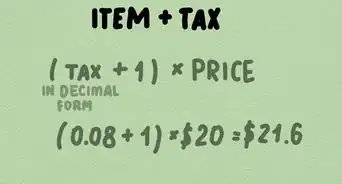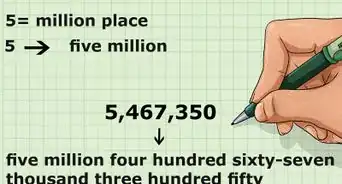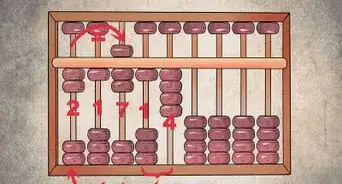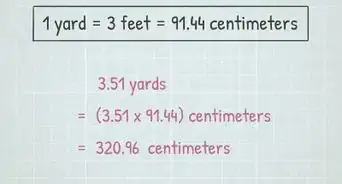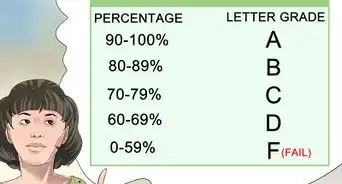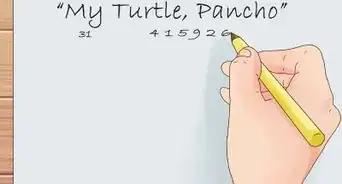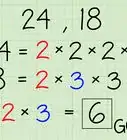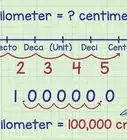wikiHow is a “wiki,” similar to Wikipedia, which means that many of our articles are co-written by multiple authors. To create this article, 52 people, some anonymous, worked to edit and improve it over time.
There are 7 references cited in this article, which can be found at the bottom of the page.
This article has been viewed 1,014,704 times.
Learn more...
Trying to read a string of binary 1's and 0's can seem a daunting task. However, with a bit of logic we can figure out what they mean. Humans have adapted to use a base ten number system simply because we have ten fingers. Computers, on the other hand (no pun intended), have only two "fingers"--on and off or one and zero. Therefore, the base two number system has been created.[1]
Steps
With Exponents
-
1Find a binary number you want to convert. We'll use this as an example: 101010.
-
2Multiply each binary digit by two to the power of its place number. Remember, binary is read from right to left.[2] The rightmost place number being zero.Advertisement
-
3Add all the results together. Let's go from right to left.[3]
- 0 × 20 = 0
- 1 × 21 = 2
- 0 × 22 = 0
- 1 × 23 = 8
- 0 × 24 = 0
- 1 × 25 = 32
- Total = 42
-
4Try another example. Let's use 101. Here is the same method as above, but in a slightly different format. You may find this format easier to understand.[4]
- 101= (1X2) power of 2 + (0X2) power of 1 + (1X2) power 0
- 101= (2X2) + (0X0) + (1)
- 101= 4 + 0 + 1
- 101= 5
- The 'zero' is not a number, but its place value must be noted.
Slot Value
-
1Find your number. The example we'll use is 00101010.
-
2Read from right to left. With each slot, the values are doubled. The first digit from the right has a value of 1, the second is a 2, then a 4, and so on.[5]
-
3Add the values of the ones. The zeros are assigned their correlating number, but those numbers are not added.
- So, in this example, add 2, 8, and 32. The result is 42.
- There is a 'no' on 1, a 'yes' on 2, a 'no' on 4, a 'yes' on 8, a 'no' on 16, a 'yes' on 32, a 'no' on 64 and a 'no' on 128. "Yes" means to add, "no" is to skip. You can stop at the last one-digit.
- So, in this example, add 2, 8, and 32. The result is 42.
-
4Translate the value into letters or punctuation marks.[6] In addition, you can convert numbers from binary to decimal or convert from decimal to binary.
- In punctuation marks, the 42 equals an asterisk (*). Click here for a chart.
Community Q&A
-
QuestionHow can I turn binary into a sentence?
 Community AnswerYou translate a string of binary code to decimals and then translate the decimals into html code. For example, 111011= 123, 123= { . Write multiple strings of binary code and you'll get a sentence.
Community AnswerYou translate a string of binary code to decimals and then translate the decimals into html code. For example, 111011= 123, 123= { . Write multiple strings of binary code and you'll get a sentence. -
QuestionCan I learn to read binary if I am frightened of math?
 Community AnswerYou will need some basic understanding of math (addition and multiplication) or a calculator.
Community AnswerYou will need some basic understanding of math (addition and multiplication) or a calculator. -
QuestionHow do I add two lines of binary numbers together?
 Community AnswerIt really depends on the method you're using. If you're looking for a sentence conversion, then the computer automatically reads in sets of eight e.g 00111111 (?), 00111101 (=), 01000001 (A) etc. However, the process the computer goes through is much more complicated than that. Essentially, every five digits is equal to either a symbol, number, or letter.
Community AnswerIt really depends on the method you're using. If you're looking for a sentence conversion, then the computer automatically reads in sets of eight e.g 00111111 (?), 00111101 (=), 01000001 (A) etc. However, the process the computer goes through is much more complicated than that. Essentially, every five digits is equal to either a symbol, number, or letter.
References
- ↑ https://www.cut-the-knot.org/do_you_know/BinaryHistory.shtml
- ↑ https://www.computerhope.com/jargon/b/binary.htm
- ↑ https://www.sciencefocus.com/science/how-to-read-binary/
- ↑ https://www.scienceabc.com/innovation/how-to-read-binary.html
- ↑ https://www.allinallnews.com/physics/how-to-read-binary-codes
- ↑ https://www.rapidtables.com/convert/number/binary-to-ascii.html
- ↑ https://www.basic-mathematics.com/binary-number-system.html
About This Article
To read binary, find a number that you want to read, and remember to count the places from right to left. Then, multiply each digit by 2 to the power of its place number. For example, if the 3rd place from the right is a 1, you would multiply 1 by 2 to the power of 3 to get 8. Once you have an answer for each place, add the numbers together from right to left. For example, 101 would translate to the number 9. For tips on using other techniques, like exponents or slot value, read on!


